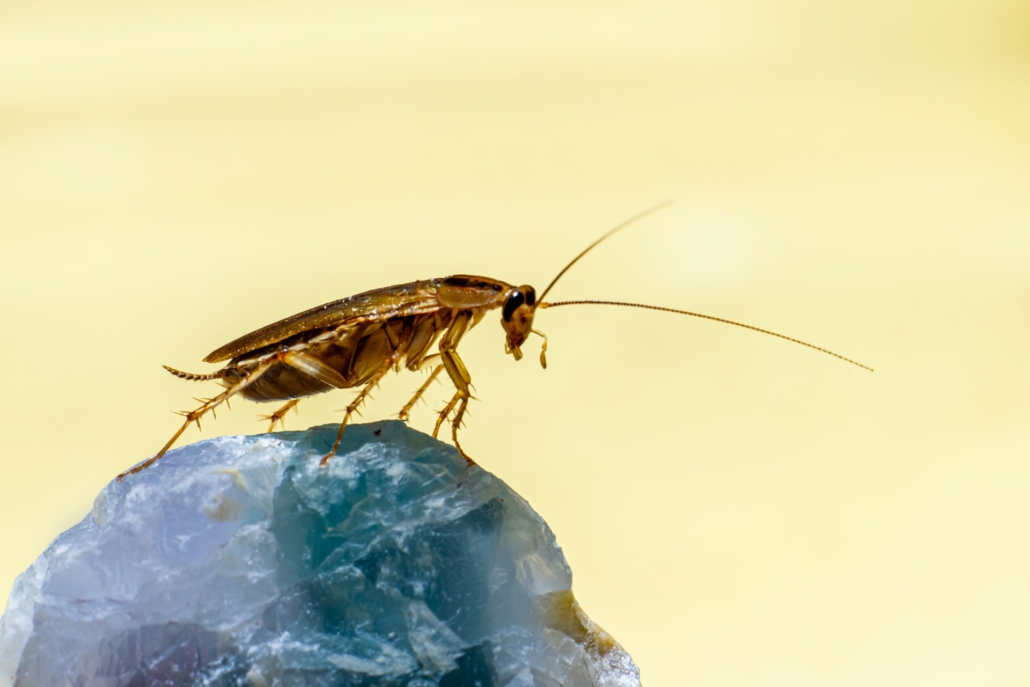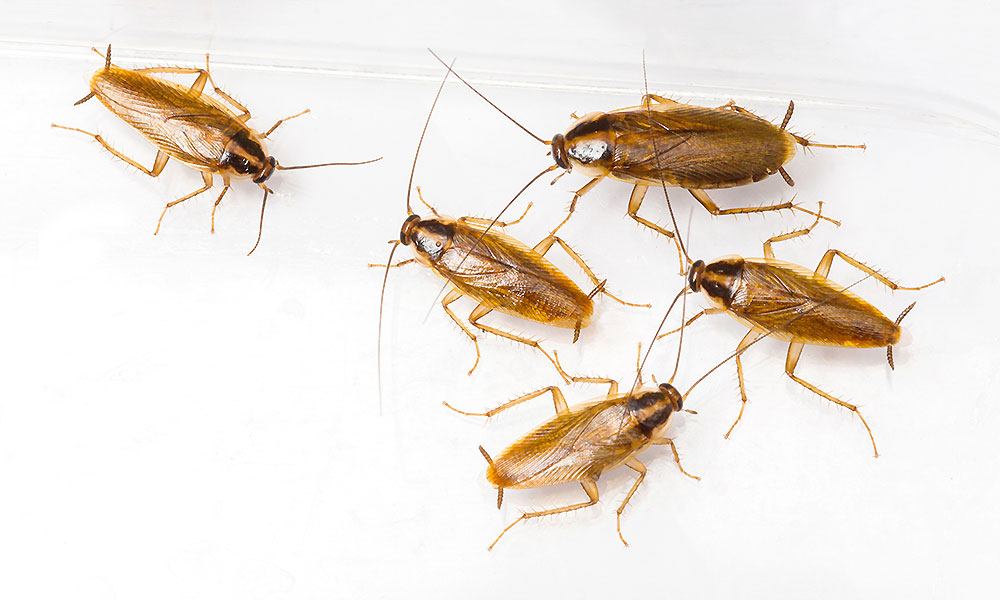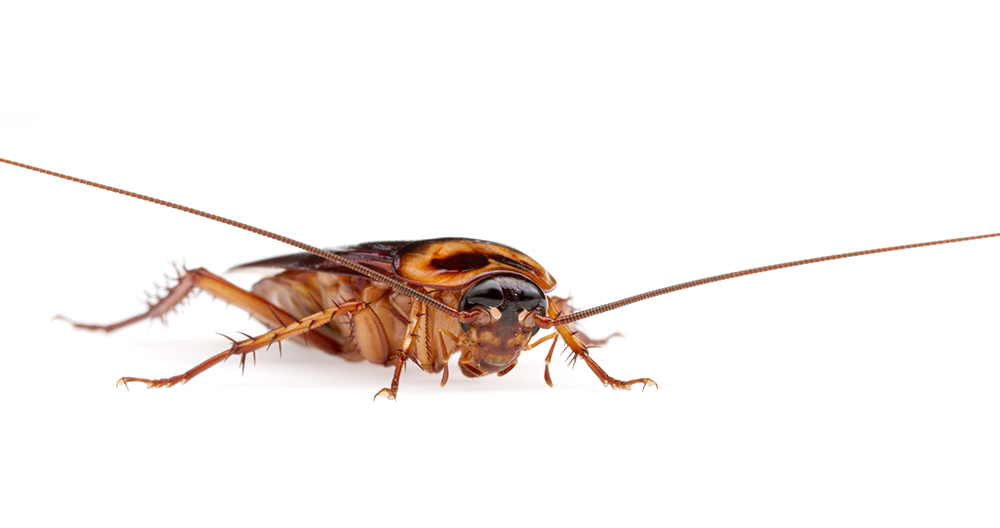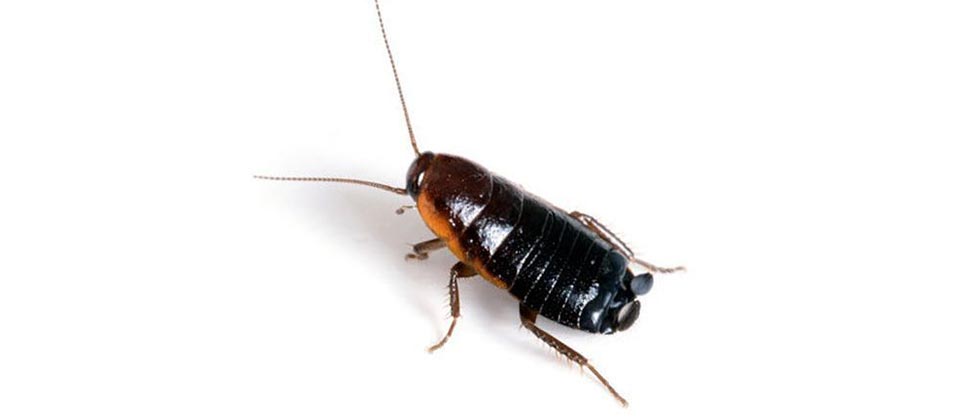Cockroaches are ancient insects that have been around for over 350 million years, belonging to the Blattodea order, which also includes termites. While most people think of roaches as nocturnal ground dwellers, some species are capable of flight.
In this article, we will explore the five types of winged roaches, their characteristics, and their flying abilities.
You are reading: The 5 Types Of Winged Roach

The 5 Types Of Winged Roach
German Cockroach (Blattella germanica)

The German cockroach (Blattella germanica), colloquially known as the croton bug, is a small and highly adaptable species of cockroach, typically measuring about 1.1 to 1.6 cm (0.43 to 0.63 in) in length. It is the most common species of cockroach found in the United States, known for its small size, short life cycle, and ability to develop insecticide resistance.
Here are some key characteristics and facts about the German cockroach:
– Appearance: German cockroaches have a flattened, oval shape, spiny legs, and long antennae. They vary in color from tan to almost black and have two dark, roughly parallel streaks on the pronotum running from behind the head to the base of the wings.
– Habitat: These cockroaches are highly adaptable and can be found in various indoor environments, including homes, restaurants, ships, trains, aircraft, and hospitals. They are more commonly found in apartment buildings due to the structural features that allow them to spread between units through common utilities, shared walls, and hallways.
– Flight Abilities: Although German cockroaches have wings, they are not strong fliers. Instead, they prefer to run and can move quickly, making it challenging to catch or control them. When disturbed, they may glide short distances, but their flight is limited.
– Health Risks: German cockroaches are not only a nuisance but also a health concern. They can contaminate food by transmitting pathogens, and their feces, shed skins, and dead bodies contain allergens that can trigger asthma. They have also been shown to transmit antibiotic-resistant bacteria, posing a threat to human health in hospitals and swine farms.
– Distribution: German cockroaches are cosmopolitan, with the only deterrent being cold temperatures. They have been introduced to various parts of the world, including North America, Australia, Africa, and the Oceanic Islands.
American Cockroach (Periplaneta americana)

American cockroach – Periplaneta americana
USA, TX, Travis Co. Austin
30.33ºN -97.75ºW 210m
17.iii.2016, indoors, A.L.Wild, coll.
The American cockroach (Periplaneta americana), also known as the waterbug, ship cockroach, or Bombay canary, is the largest species of common cockroach. Despite its name, it is not native to North America but was most likely introduced from Africa via ships. Here are some key characteristics and facts about the American cockroach:
– Appearance: Adult American cockroaches can range in length from 1.4 to 2.1 inches (35-54 mm). They have a reddish-brown color, with a yellowish figure-eight pattern on the back of their head. Both males and females have wings and can fly short distances.
Read more : 10 Types Of Old World Monkeys
– Habitat: American cockroaches are found worldwide and can inhabit various environments. They prefer warm temperatures around 84 degrees Fahrenheit and do not tolerate cold, with temperatures below 15 degrees Fahrenheit being lethal to them. They are often found in large commercial buildings such as restaurants, bakeries, grocery stores, food processing plants, and hospitals, where they can infest food-storage and food-preparation areas, basements, and steam tunnels. They are also found, although less commonly, in residences and during the summer months, they can be found outdoors in yards and alleys.
– Health Risks: American cockroaches are not only a nuisance but also a potential health concern. They can contaminate food and surfaces with pathogens, and their feces, shed skins, and dead bodies contain allergens that can trigger asthma and allergies in some individuals.
– Distribution: The American cockroach has a widespread distribution, and its introduction to the Americas is believed to have occurred from the 17th century AD onward, possibly due to human commercial patterns, including the Atlantic slave trade. In the United States, it is the most common species found in city sewer systems.
Oriental Cockroach (Blatta orientalis)

The Oriental cockroach (Blatta orientalis), also known as the waterbug or black cockroach, is a large species of cockroach, with adult males measuring 18-29 mm (0.71-1.14 in) and adult females measuring 20-27 mm (0.79-1.06 in).
Here are some key characteristics and facts about the Oriental cockroach:
– Appearance: Oriental cockroaches are dark brown or black in color and have a glossy body. The female has a wider body than the male and appears to be wingless at a casual glance, but she is brachypterous, having non-functional wings just below her head. The male has long wings that cover three-quarters of the abdomen and are brown in color, with a narrower body.
– Habitat: Oriental cockroaches are often found in dark, damp, and cool areas such as under sinks, washing machines, and in damp basements. They are less wary and more sluggish than other cockroach species. While they are primarily ground-dwelling insects, they are known to climb water pipes to the upper floors of buildings.
– Health Risks: Oriental cockroaches can be a nuisance and a potential health concern. They can contaminate food and surfaces with pathogens, and their feces, shed skins, and dead bodies contain allergens that can trigger asthma and allergies in some individuals.
– Distribution: Oriental cockroaches are very common worldwide and are considered one of the most successful groups of animals. They have successfully adjusted to living with humans due to their adaptability. In the United States, they are one of the four most common pest species, along with the German, brown-banded, and American cockroaches.
Brown-Banded Cockroach (Supella longipalpa)
The Brown-Banded Cockroach (Supella longipalpa) is a small species of cockroach, measuring about 10 to 14 mm long. Here are some key characteristics and facts about the Brown-Banded Cockroach:
– Appearance: The Brown-Banded Cockroach is tan to light brown and has two light-colored bands across its wings and abdomen. These bands may sometimes appear broken or irregular but are quite noticeable, although they may be partly obscured by the wings. The male has wings that cover the abdomen, while the female has wings that do not cover the abdomen completely. The male appears more slender than the female, while the female appears wider.
– Habitat: Brown-Banded Cockroaches are found in homes, apartments, hotels, and hospitals. They are less frequently found in stores, restaurants, and kitchens. These cockroaches are often transported in furniture and can spread rapidly throughout an entire building. They are generally found on ceilings, high on walls, behind picture frames, and near the motors of refrigerators and other appliances. They are also found in light switches, closets, and furniture. Unlike German cockroaches, Brown-Banded Cockroaches do not require as much moisture, which explains why they are typically found in rooms other than the kitchen or bathroom.
Read more : 5 Extinct Types of Spiders
– Behavior: Brown-Banded Cockroaches dislike light and are not normally seen during the day. They are known to infest various items, including books, wallpaper, and furniture, as they prefer warm and dry environments. They can also feed on a wide range of materials, including starchy and sugary foods, as well as non-food items such as nylon stockings and paper.
– Health Risks: Brown-Banded Cockroaches can be a nuisance and a potential health concern. They can contaminate food and surfaces with pathogens, and their feces, shed skins, and dead bodies contain allergens that can trigger asthma and allergies in some individuals.
– Distribution: The Brown-Banded Cockroach has a fairly wide distribution, being found in the northeastern, southern, and midwest regions of the United States. It has been distributed by vehicles of commerce from its Asiatic origins to all temperate regions.
Wood Cockroach (Parcoblatta spp.)
The Wood Cockroach (Parcoblatta spp.) is a group of native North American cockroaches that are commonly found in wooded areas. Here are some key characteristics and facts about Wood Cockroaches:
– Appearance: Wood Cockroaches have an oval-shaped, flattened body, allowing them to hide under tree bark or in tight crevices. They range in color from light reddish-brown to dark brown, with the outer edge of the “shield” behind the head being paler in color. Adult males often have wings and are drawn to lights, while females are flightless.
– Habitat: Wood Cockroaches are typically found in wooded areas, such as forests and parks. They can also be found in rain gutters, wood and leaf piles, and other areas where plant material accumulates and decays. These cockroaches are usually only occasional invaders of homes and rarely breed indoors. They are often either carried in with firewood or attracted by outdoor lights.
– Behavior: Wood Cockroaches primarily feed on decaying organic material, such as dead leaves and wood. They are difficult to manage with insecticides inside the home because they originate outdoors. Woodpiles should be kept away from the house to reduce the likelihood of Wood Cockroach infestations.
– Health Risks: Wood Cockroaches are not considered a significant health concern. They do not contaminate food or surfaces like other species of cockroaches, and they do not carry as many pathogens. However, some individuals may still experience allergies or asthma symptoms when exposed to Wood Cockroach allergens.
FAQS
1. Do all cockroaches fly?
No, not all cockroaches are capable of flight. Only about 1% of all cockroach species can fly.
2. How many pairs of wings do cockroaches have?
Cockroaches that can fly have 2 pairs of wings – a pair of leathery forewings and a pair of membranous hindwings that the forewings cover and protect.
3. Can both male and female cockroaches fly?
In most cases, both male and female cockroaches can fly, but there may be some variations among different species.
4. Which are the 5 types of winged roaches?
The 5 types of winged roaches are the German Cockroach (Blattella germanica), American Cockroach (Periplaneta americana), Oriental Cockroach (Blatta orientalis), Brown-Banded Cockroach (Supella longipalpa), and Wood Cockroach (Parcoblatta spp.).
5. Are all winged roaches a sign of an infestation?
Not necessarily. While the presence of winged roaches can indicate a potential infestation, seeing a single roach doesn’t always mean you have a problem, as not all cockroaches can live long indoors.
6. How can I get rid of flying cockroaches?
If you’re dealing with flying cockroaches, you can try various strategies to eliminate them, such as using insecticides, sealing entry points, and maintaining a clean environment.
Source: https://petstutorial.com
Category: Animals










